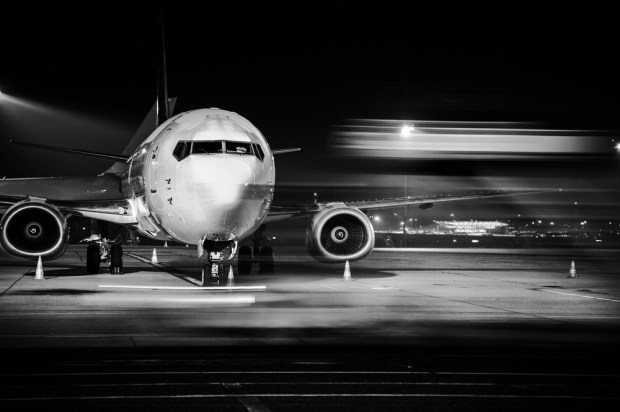Piloting Payments Innovation, Ready Or Not

Sometimes, payments innovators have to wait for a certain industry to catch up to modern technology for their solutions to be ready for adoption. Other times, innovative payment tools are the fuel for industry evolution.
A new mobile solution by U.S. Bank might be considered both. Last week, the company unveiled an app for pilots in the corporate and private aviation space. It’s a tool designed for the unique challenges pilots face when they land their plane for servicing from a fixed base operator (FBO), a company based at an airport that provides services like refueling and maintenance.
Clearly, U.S. Bank Multi Service Aviation’s MSA Pay app was built for a niche market; but as Tami Richards, U.S. Bank aviation product manager, and Dominic Venturo, Chief Innovation Officer, told PYMNTS in an interview, the developers of this solution had to balance between making sure the private aviation market was ready for such technology, and providing a tool that will help propel the industry into the future – and that’s a feat typical for many payments innovators.
Here’s how the app works: MSA Pay is linked to a pilot and its corporation’s MSA commercial card. Pilots can request servicing from an FBO, allowing those service providers to prepare for the plane’s arrival. Pilots can then be notified on their app when servicing is complete, and FBOs can send an invoice straight to the pilot’s mobile device for approval. The invoice gets paid via the card linked to the MSA Pay account, while administrators are automatically sent invoice data for reconciliation.
Richards and Venturo said the app is built for payments speed and for making the technicalities of a transaction fall to the background, allowing aviation firms and FBOs to focus on their relationship. But, said Venturo, it’s also a way to strengthen aviation firms’ balance sheets.
“From a cashflow perspective, one of the things that this is focused on is getting rid of the paper and simplifying the steps the FBO and pilot need to make the exchange happen,” he said. “It’s not necessarily a cashflow solution, but it does facilitate processing the payment more quickly because of the electronic transmission of the data and the lack of paperwork [that needs to be done] by administrators.”
Richards explained that for the last few decades, pilots were tasked with exiting the plane, walking across the tarmac to the FBO, and presenting the physical, plastic card to servicers.
She added that MSA Pay not only eliminates this need to present a physical card to an FBO, but also that a mobile solution allows pilots to book servicing appointments, gain notifications of servicing completion and link the transaction data to the back-office of their companies.
Now, scheduling, payment and accounting processes can be automated. “It’s streamlining the process for the pilot,” Richards explained. “And FBOs process that transaction exactly like it does any other payment they receive – the MSA transaction is batched and settled with the other transactions they had that day.”
It’s an automated process that Richards said solves legacy, manual tasks, but one that could not have necessarily been rolled out on the market any earlier.
“I think back to when flight plans used to be large pieces of paper in the cockpit,” Richards said. “Now, a lot of these things are done electronically, whether on an iPad or some other sort of tablet. We had to wait for the industry to get there.”
[bctt tweet=”‘We had to wait for the industry to get there'”]
Both Richards and Venturo pointed to the three decades U.S. Bank has been working in this industry, meaning not only has the bank come to understand the specific needs of the market, but it’s also been able to see what parts of the sector, including payments, have yet to modernize.
“This solution is really taking what technology has emerged and become more mainstream, and adapted it to a 30-year-old business,” Venturo said.
MSA Pay may be geared toward the unique corporate aviation sector, but having to wait until an industry is ready for your solution is a common hurdle for innovators. Today, however, Richards said that mobile devices in the cockpit are becoming “more and more common,” meaning mobile payments solutions are likely to gain greater traction and accelerate the industry’s technological adoptions.
“I think that now we’re seeing a push towards more innovative and more electronic-based solutions for not only the pilots, but also for the FBOs and others in the industry,” she said.
